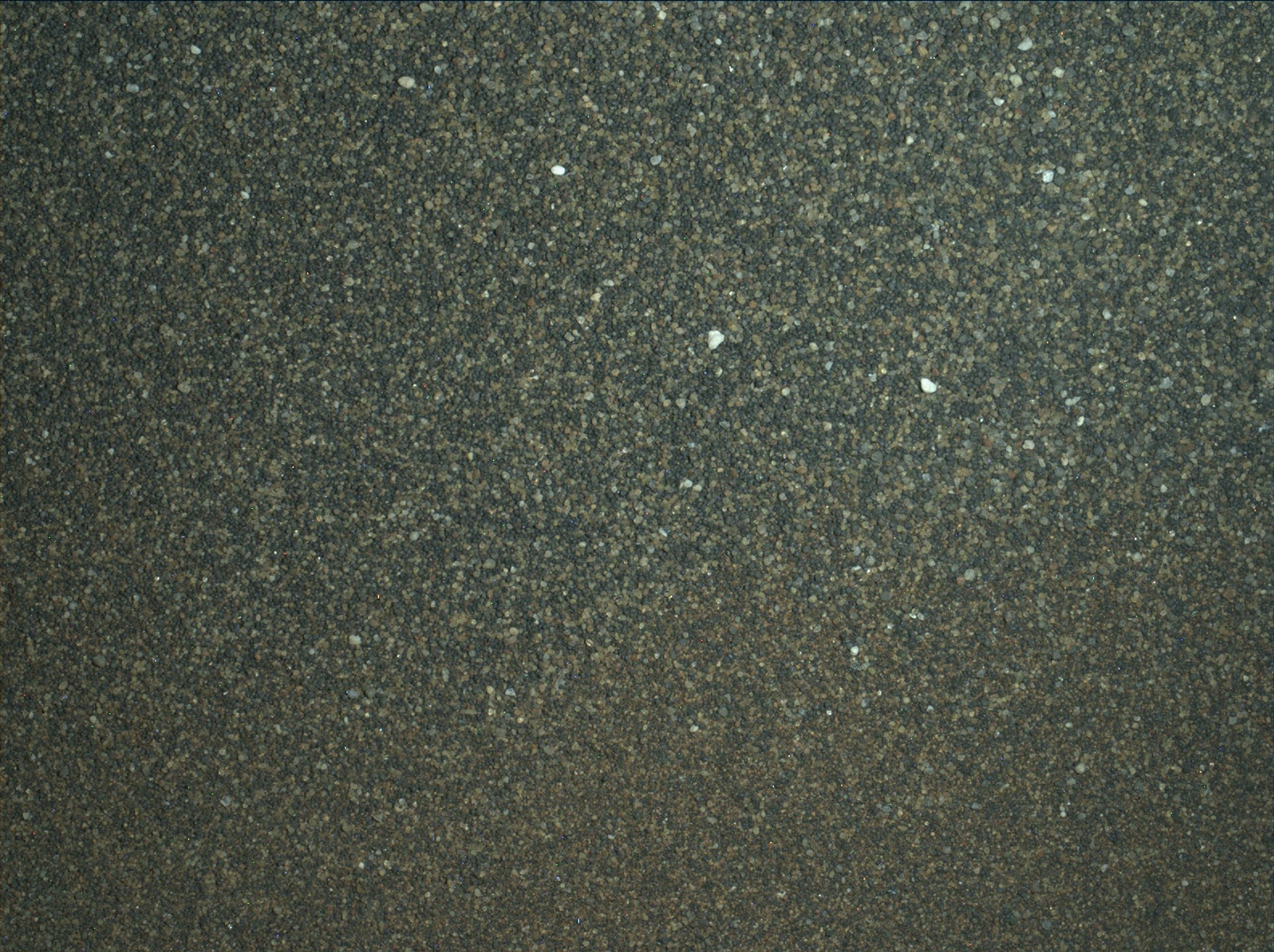Page 1 of 1
Curiosity Sand Dune UP Close
Posted: Thu Jan 28, 2016 8:06 pm
by BMAONE23
This image of a Sand Dune UP CLOSE shows just what Martian Sand looks like.
Also, there is an interesting asterism resembling the Big Dipper contained in the arrangement of the larger White particles
From SOL 1234
http://mars.jpl.nasa.gov/msl/multimedia ... XXX&s=1234
Re: Curiosity Sand Dune UP Close
Posted: Thu Jan 28, 2016 8:30 pm
by rstevenson
BMAONE23 wrote:This image of a Sand Dune UP CLOSE shows just what Martian Sand looks like.
It shows what the sand in this particular dune in the Bagnold Dunes area looks like. There are many different coloured sands in other areas of Mars, and many different textures. Here's a pic from Sol 930, showing a closeup of tiny granules with very fine reddish dust around them, and in the middle a pile of grindings from one of Curiosity's tools exploring a nearby rock.
I've seen images returned by the various rovers that show gray, brown, yellow, orange, purple, even greenish sands -- though it's not always easy to tell how much the colours have been enhanced (for scientific purposes, of course) before the images were published. And I've seen particle sizes from talcum powder to road salt. It's a planet. Lots of variety.
Rob
MSL: Sandy Selfie Sent from NASA Mars Rover
Posted: Sat Jan 30, 2016 4:57 pm
by bystander
Sandy Selfie Sent from NASA Mars Rover
NASA |
JPL-Caltech |
MSL Curiosity | 2016 Jan 29
[img3="This 2016 Jan 19 self-portrait of NASA's Curiosity Mars rover shows the vehicle at "Namib Dune," where the rover's activities included scuffing into the dune with a wheel and scooping samples of sand for laboratory analysis. Credit: NASA/JPL-Caltech/MSSS"]http://mars.nasa.gov/msl/imgs/2016/01/c ... 16-br2.jpg[/img3][hr][/hr] The latest self-portrait from NASA's Curiosity Mars rover shows the car-size mobile laboratory beside a dark dune where it has been scooping and sieving samples of sand.
The new selfie combines 57 images taken by the Mars Hand Lens Imager (MAHLI) camera at the end of Curiosity's arm on Jan. 19.
The rover has been investigating a group of active sand dunes for two months, studying how the wind moves and sorts sand particles on Mars. The site is part of Bagnold Dune Field, which lines the northwestern flank of Mars' Mount Sharp.
When the component images were taken, the rover had scuffed the edge of "Namib Dune" and collected the first of three scoops of sand from that dune. It used its scoop later to collect a second sample on Jan. 19, and a third on Jan. 22.
During processing of the third sample, an actuator in the sample-processing device did not perform as expected when commanded. This week, the Curiosity team is identifying possible reasons for the actuator's performance.
The processing device on the arm is named CHIMRA, for Collection and Handling for In-situ Martian Rock Analysis. The component that was commanded to open, but did not, is called the CHIMRA tunnel. It is opened by using the thwack actuator, a motorized component that also can deliver a firm tap to help clean sample material from a nearby sieve. Part of the third scooped sample is inside the CHIMRA tunnel after passing through a sieve. If the tunnel had opened via the thwack actuator as planned, the next step would have been to take an image of the sand inside it. ...

